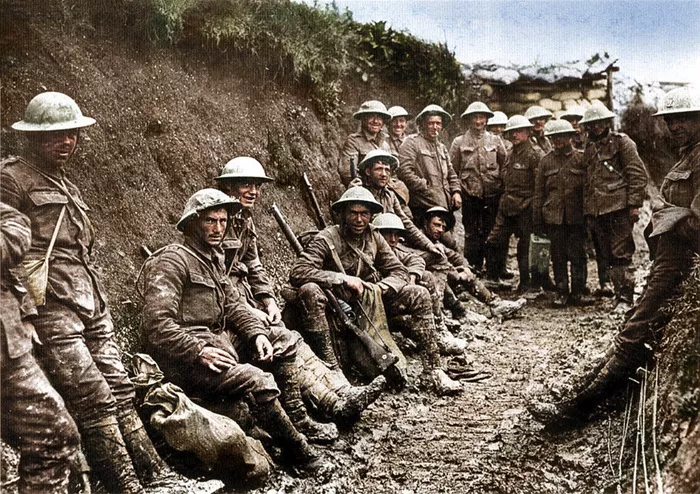The Battle of the Somme, one of the most infamous and devastating battles of World War I, commenced on July 1st, 1916. This article delves into the historical context, military strategies, human toll, and lasting impacts of this pivotal event. By examining primary sources, scholarly analyses, and personal accounts, this study aims to provide a comprehensive understanding of the factors leading to the battle, its execution, and its aftermath. Through detailed narratives of military operations, discussions on leadership decisions, and reflections on societal implications, this article seeks to illuminate the complexities and consequences of the Battle of the Somme within the broader context of the First World War.
Introduction
The Battle of the Somme, launched on July 1st, 1916, stands as a watershed moment in the annals of military history. Planned as a joint Franco-British offensive against German forces on the Western Front, the battle aimed to alleviate pressure on French forces at Verdun and achieve a breakthrough that would alter the course of World War I. However, what ensued was a protracted and harrowing conflict marked by unprecedented casualties, strategic complexities, and enduring lessons in warfare. This article explores the multifaceted dimensions of the Battle of the Somme, examining its origins, conduct, and profound impact on military strategy, civilian morale, and historical memory.
Origins and Strategic Objectives
The origins of the Battle of the Somme can be traced to the strategic imperatives facing the Allies in 1916. With the Western Front deadlocked and the staggering losses at Verdun necessitating a diversionary offensive, British and French military commanders devised a plan to launch a major assault along the Somme River. The objectives were twofold: to relieve pressure on the French at Verdun and to achieve a breakthrough against German defenses, thereby shifting the momentum of the war in favor of the Allies.
Preparations and Military Planning
Preparations for the Battle of the Somme involved meticulous planning, logistical challenges, and coordination between Allied forces. British General Douglas Haig, supported by French General Joseph Joffre, formulated a strategy that combined prolonged artillery bombardment with a massive infantry assault across a wide front. The objective was to weaken German defenses and create openings for Allied troops to advance, supported by cavalry and artillery.
The First Day: July 1st, 1916
July 1st, 1916, marked the commencement of the Battle of the Somme with a massive Allied offensive. British and French forces launched coordinated attacks along a 30-kilometer front, aiming to overwhelm German defenses and seize key strategic positions. However, the reality on the ground quickly devolved into a scene of unimaginable carnage. British infantry battalions, advancing across no man’s land, faced withering machine gun fire and artillery barrages that exacted a heavy toll within hours of the assault. The first day of the battle stands as the bloodiest in British military history, with over 57,000 casualties, including nearly 20,000 killed.
Military Operations and Challenges
In the weeks and months following July 1st, 1916, the Battle of the Somme evolved into a grueling test of endurance and attrition. Allied forces struggled to gain ground amidst entrenched German defenses, barbed wire obstacles, and artillery bombardments. Battles at key locations such as Mametz Wood, Thiepval Ridge, and High Wood epitomized the ferocity and complexity of trench warfare, with both sides grappling for tactical advantage amid dire conditions.
Leadership Decisions and Controversies
The conduct of the Battle of the Somme was shaped by leadership decisions that continue to spark debate among historians and military strategists. General Haig’s insistence on pursuing frontal assaults and the protracted nature of the battle have been subjects of criticism and scrutiny. Conversely, the logistical challenges, weather conditions, and evolving battlefield dynamics presented formidable obstacles that tested the resolve and adaptability of Allied commanders.
Impact on Soldiers and Civilians
Beyond its strategic and tactical dimensions, the Battle of the Somme profoundly impacted the lives of soldiers and civilians alike. For soldiers, the battle represented an ordeal of endurance, courage, and sacrifice amidst the horrors of trench warfare. Medical innovations and psychological impacts underscored the human cost of industrialized warfare, while civilian populations in the region endured displacement, destruction, and the realities of war on their doorstep.
Legacy and Historical Memory
The legacy of the Battle of the Somme extends far beyond its immediate military outcomes. The staggering casualties, strategic lessons learned, and cultural reverberations have shaped historical memory and commemorative practices. Memorials such as the Thiepval Memorial to the Missing of the Somme and the Beaumont-Hamel Newfoundland Memorial stand as enduring testaments to the sacrifice and resilience of those who fought and perished.
Historiography and Commemoration
The Battle of the Somme continues to be a focal point of historical scholarship, with ongoing research shedding new light on its complexities and enduring significance. Commemorative events, museum exhibitions, and educational initiatives seek to honor the memory of those who served while fostering reflection on the broader lessons of conflict and remembrance. Through these efforts, the Battle of the Somme remains a poignant reminder of the human toll of war and the quest for peace in a turbulent world.
See also: When Was The Declaration Of Independence Ratified?
Conclusion
In conclusion, the Battle of the Somme, beginning on July 1st, 1916, stands as a defining moment in the history of modern warfare. Its impact on military strategy, civilian populations, and historical memory reverberates to this day, underscoring the complexities and consequences of industrialized conflict. This article has examined the origins, conduct, and enduring legacy of the battle, highlighting its profound human cost and the lessons it imparts for future generations. As we reflect on the Battle of the Somme, let us remember the courage and sacrifice of those who served, honor their memory, and strive for a world where peace prevails over the ravages of war.

